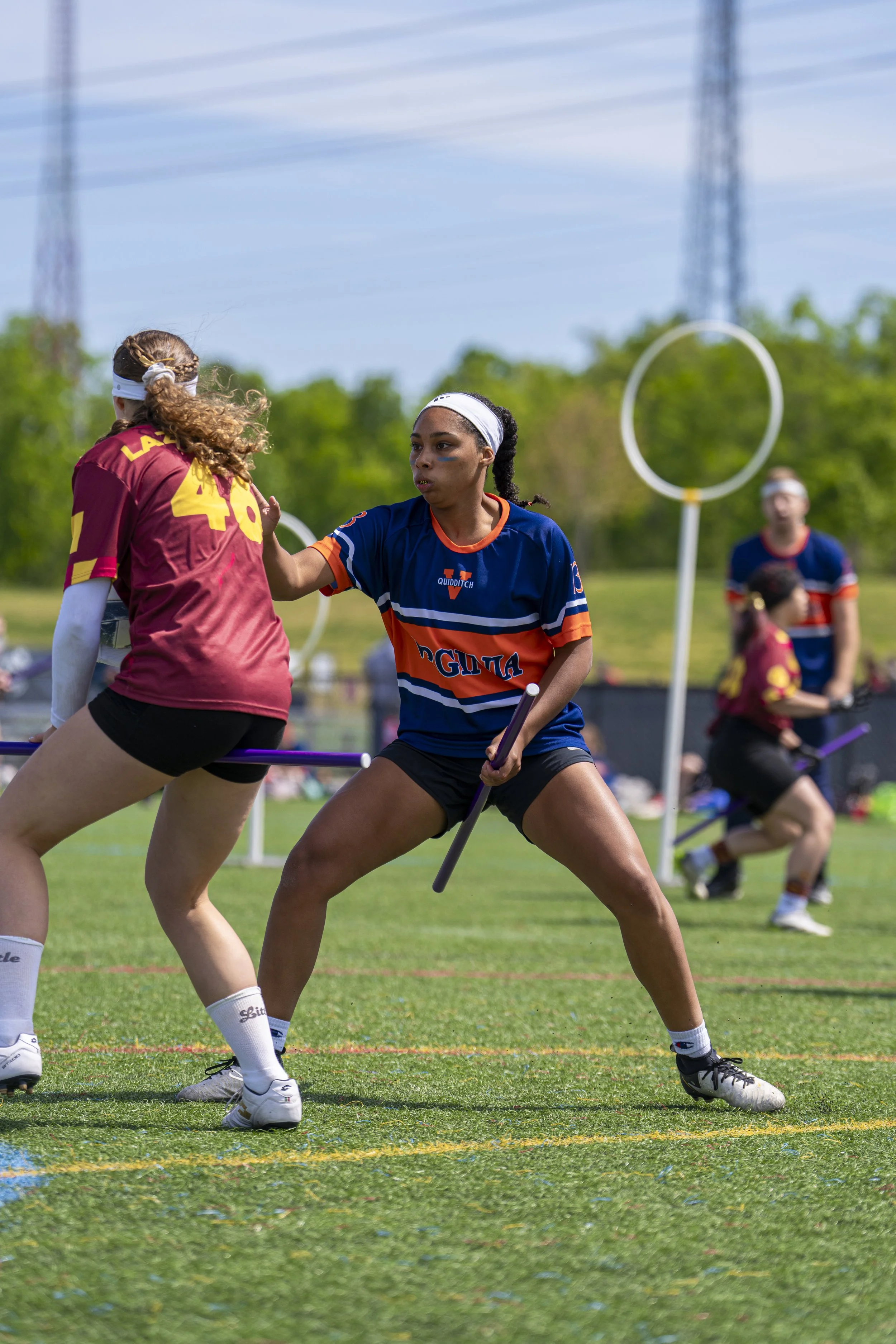TITLE 9 3/4
When all genders are able to compete equally on the pitch, they will learn to respect and value each other’s abilities regardless of gender identity. It is well-researched that sports participation improves the lives of those who identify as or are perceived as female and levels the “playing field” not only in sports but in every aspect of society. Quadball takes those benefits a step further by promoting a sport that is truly free of gender-based restrictions rather than evenly segregated between men and women (as it currently exists under Title IX). Title IX additionally continues to exclude those who do not identify with the binary gender system.
Through Title 9 ¾, USQ is more inclusive of transgender and
non-binary individuals by using gender as opposed to sex in policies.
We understand that the process of transition is a very personal (and expensive) decision and is influenced by many factors, none of which are or should be because a sport requires it. USQ also hopes to be a positive example for other sports leagues as well as a way to positively influence how players view other genders.
GENDER MAXIMUM POLICY
In the USQ Club Competitive Division and College Division One, a team may not have more than three players who identify as the same gender in play at any point during the game. The addition of seekers will not change the gender maximum allowed on the field. The gender that a player identifies as is considered to be that player’s gender.
In our Club Open Division and College Division Two, a team may not have more than four players who identify as the same gender in play at any point during the game.
This gender maximum rule ensures that teams are working to recruit and field a team that has diversity; the rule is also written in such a way that it does not exclude individuals who do not identify within the gender binary. USQ accepts those who don’t identify within the gender binary and acknowledges that not all of our players identify as male or female. We welcome people of all identities and genders into our league.
THE END GAME
Through Title 9 ¾, USQ aims to:
Use the growing popularity of Quadball to challenge the way our world thinks about gender in sports and athletics.
Inspire other sports leagues and athletes to reconsider their gender regulations and, in turn, effect broader positive change in gender equality worldwide.
Photo Credit: Paul Schiopu, Shirley Lu



